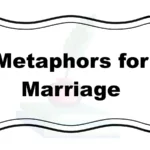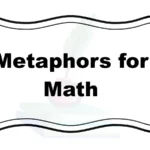Finding the right words to describe feelings or sensations can truly elevate how we connect with others. When it comes to expressing coldness, whether physical or emotional, the way we phrase it can add warmth, care, or even humor to our message.
Using similes—comparisons with “like” or “as”—helps paint vivid pictures that resonate deeply. This article offers 25 thoughtful and creative similes for cold to help you communicate with more heart and precision. Whether you’re describing a chilly day or someone’s frosty demeanor, these similes bring your words to life in a meaningful way.
What Does “Cold” Mean?
Cold typically refers to a low temperature, the absence of warmth, or a feeling of chilliness. Beyond the physical sense, cold can describe emotional distance, aloofness, or a lack of friendliness. Understanding the different contexts of cold helps in choosing the most fitting simile to express exactly what you mean—whether it’s the biting cold of winter or a person’s icy behavior.
When to Use “Cold” Similes
You can use cold similes in many situations—writing, conversations, storytelling, or even poetry. They work well when describing:
- The weather or environment
- Physical sensations or reactions
- Emotional states, such as feeling distant or unfriendly
- Atmospheres or moods, like a “cold reception”
Choosing the right simile helps convey your message with clarity and empathy, making your communication more engaging and relatable.
Pros and Cons of Using Similes for “Cold”
Pros:
- Adds vivid imagery and emotional depth
- Makes descriptions more relatable and memorable
- Helps clarify abstract or complex feelings
Cons:
- Overuse can make writing feel cliché
- May confuse if the simile is too obscure or unfamiliar
- Needs to fit the tone and context carefully to avoid misunderstanding
1. Cold as Ice
Definition: As cold as frozen water, emphasizing extreme chilliness.
Explanation: This simile highlights something intensely cold, often used for physical temperature or emotional coldness.
Example: Her stare was cold as ice, making everyone uneasy.
Best Use: Describing icy temperatures or a very unemotional, distant person.
Tone: Direct, vivid, often serious.
Other Ways to Say:
- Cold like a glacier
- As frosty as ice
- Chilling as ice cubes
2. Cold as the North Pole
Definition: Extremely cold, like the Arctic region.
Explanation: Refers to a place known for its harsh, freezing climate.
Example: The wind outside felt cold as the North Pole.
Best Use: Describing harsh winter weather or a biting cold environment.
Tone: Descriptive, intense.
Other Ways to Say:
- Cold like the Arctic
- As frigid as Siberia
- Bitter as an ice storm
3. Cold as a Witch’s Heart
Definition: Emotionally very cold or cruel.
Explanation: Implies harshness or lack of empathy, often figurative.
Example: His words were cold as a witch’s heart during the argument.
Best Use: Expressing emotional coldness or cruelty.
Tone: Dramatic, metaphorical.
Other Ways to Say:
- Cold like a stone
- As frosty as a winter night
- Icy as a glacier
4. Cold as Steel
Definition: Unfeeling, hard, and cold.
Explanation: Steel is physically cold and unyielding, symbolizing toughness or emotional distance.
Example: She gave him a cold as a steel response.
Best Use: Describing unemotional or tough attitudes.
Tone: Stern, firm.
Other Ways to Say:
- Hard as iron
- Chillin like metal
- As cold as a blade
5. Cold as Snow
Definition: Soft but cold, pure and chilling.
Explanation: Snow is gentle yet cold; the simile suggests a delicate chill.
Example: The morning air was cold as snow.
Best Use: Describing soft but noticeable coldness in nature or mood.
Tone: Calm, poetic.
Other Ways to Say:
- Cool as frost
- Fresh as winter’s breath
- As chill as snowflakes
6. Cold as a Freezer
Definition: Extremely cold, like an appliance that preserves food.
Explanation: Evokes an artificial but strong coldness.
Example: The basement was cold as a freezer.
Best Use: Describing indoor cold or chilling environments.
Tone: Casual, relatable.
Other Ways to Say:
- Cold like icebox
- As frosty as a fridge
- Chilly as a cold storage
7. Cold as a Dead Fish
Definition: Physically cold and lifeless, also emotionally unresponsive.
Explanation: Combines physical coldness with a metaphor for dullness or lack of warmth.
Example: His handshake was cold as a dead fish.
Best Use: Describing lack of enthusiasm or emotion.
Tone: Informal, slightly humorous.
Other Ways to Say:
- Limp as a rag doll
- Cold like wet cement
- Frosty as a ghost
8. Cold as a Mountain Stream
Definition: Naturally cold and refreshing.
Explanation: Suggests coldness with purity and clarity.
Example: The water was cold as a mountain stream.
Best Use: Describing nature’s crisp chill.
Tone: Fresh, vivid.
Other Ways to Say:
- Clear as ice water
- Cool as a spring
- Crisp like a river breeze
9. Cold as a Shadow
Definition: Cold and elusive, sometimes ominous.
Explanation: Shadows imply darkness and chilliness.
Example: The room felt cold as a shadow after she left.
Best Use: Describing eerie or emotional coldness.
Tone: Mysterious, somber.
Other Ways to Say:
- Dark as midnight
- Chill as a ghost
- Cold like a moonlit night
10. Cold as the Grave
Definition: Deadly cold, lifeless.
Explanation: Suggests an ultimate, chilling cold associated with death.
Example: His face was as cold as the grave.
Best Use: Dramatic expressions of extreme coldness or lifelessness.
Tone: Grave, serious.
Other Ways to Say:
- Dead as stone
- Frosty as a tomb
- Chill like the afterlife
11. Cold as Winter’s Breath
Definition: The chilling air typical of winter.
Explanation: Evokes the crisp, biting sensation of winter wind.
Example: The wind blew cold as winter’s breath.
Best Use: Describing outdoor coldness.
Tone: Poetic, atmospheric.
Other Ways to Say:
- Sharp as frost
- Bitter as winter wind
- Frosty as the cold north
12. Cold as Ice Water
Definition: Extremely cold, refreshing.
Explanation: Ice water is often used to quickly cool down.
Example: She splashed cold as ice water on her face.
Best Use: Describing refreshing coldness.
Tone: Clear, brisk.
Other Ways to Say:
- Chill like iced tea
- Cold as glacier melt
- Frosty as a snow cone
13. Cold as a Tombstone
Definition: Implying lifeless, unwelcoming coldness.
Explanation: Tombstones symbolize death and stillness.
Example: The room felt cold as a tombstone after the argument.
Best Use: Dramatic emotional coldness.
Tone: Heavy, somber.
Other Ways to Say:
- Cold as a crypt
- Frosty as the grave
- Chill as a mausoleum
14. Cold as a Robot
Definition: Emotionally unfeeling and mechanical.
Explanation: Robots are often portrayed as cold and unemotional.
Example: His reply was cold as a robot.
Best Use: Describing robotic or emotionless behavior.
Tone: Modern, detached.
Other Ways to Say:
- Cold as a machine
- Emotionless as AI
- Hard as a circuit board
15. Cold as a Glass of Ice
Definition: Very cold, like chilled glassware.
Explanation: Emphasizes the sensation of cold transferred through glass.
Example: The drink was cold as a glass of ice.
Best Use: Describing physical chilliness.
Tone: Casual, vivid.
Other Ways to Say:
- Frosty as a glass
- Chill like a coaster
- Icy as crystal
16. Cold as Frost on the Window
Definition: Thin, delicate but biting cold.
Explanation: Frost is cold but often visually beautiful.
Example: The air was cold as frost on the window.
Best Use: Describing subtle chill.
Tone: Poetic, gentle.
Other Ways to Say:
- Cool as morning dew
- Crisp as autumn air
- Icy as frozen leaves
17. Cold as the Arctic Wind
Definition: Extremely cold and harsh.
Explanation: Arctic winds are biting and relentless.
Example: The breeze was cold as the Arctic wind.
Best Use: Describing severe weather.
Tone: Intense, vivid.
Other Ways to Say:
- Bitter as the north wind
- Sharp as polar gusts
- Freezing as tundra air
18. Cold as a Penguin’s Feather
Definition: Soft but chilled.
Explanation: Penguins live in cold climates but have insulating feathers.
Example: The pillow felt cold as a penguin’s feather.
Best Use: Describing soft but cold touch.
Tone: Light, descriptive.
Other Ways to Say:
- Cool as down feathers
- Chill as winter plumage
- Soft and cold as frost
19. Cold as a Snowman’s Smile
Definition: Icy and unfriendly.
Explanation: Snowmen are cold by nature, their smiles frozen.
Example: His grin was cold as a snowman’s smile.
Best Use: Describing unfriendly or insincere smiles.
Tone: Playful, metaphorical.
Other Ways to Say:
- Frosty as a grin
- Chilly as a fake smile
- Icy as a grin
20. Cold as a Glacier’s Edge
Definition: Sharp and intensely cold.
Explanation: Glaciers are massive and freezing.
Example: The breeze was cold as a glacier’s edge.
Best Use: Describing biting cold.
Tone: Vivid, serious.
Other Ways to Say:
- Sharp as ice sheets
- Chill like frozen cliffs
- Frosty as iceberg tips
21. Cold as a Vault
Definition: Dark, cold, and uninviting.
Explanation: Vaults are often cold and sterile.
Example: The office felt cold as a vault.
Best Use: Describing unwelcoming spaces.
Tone: Serious, stark.
Other Ways to Say:
- Cold as a safe
- Frosty as steel walls
- Chilling as a lockbox
22. Cold as a Haunted House
Definition: Eerie, spooky coldness.
Explanation: Haunted houses are associated with chilling atmospheres.
Example: The room was cold as a haunted house at midnight.
Best Use: Describing spooky or unsettling cold.
Tone: Dramatic, eerie.
Other Ways to Say:
- Ghostly cold
- Chill like a spirit’s breath
- Frosty as a phantom
23. Cold as a Winter Night
Definition: Typical cold experienced during winter evenings.
Explanation: Evokes the quiet, still coldness of night.
Example: The air was cold as a winter night.
Best Use: Describing peaceful but cold environments.
Tone: Calm, reflective.
Other Ways to Say:
- Cool as dusk
- Frosty as nightfall
- Chill like moonlight
24. Cold as a Snowflake
Definition: Delicate and cold.
Explanation: Snowflakes are fragile but cold.
Example: Her touch was cold as a snowflake.
Best Use: Describing gentle chill.
Tone: Soft, poetic.
Other Ways to Say:
- Cool as frost crystals
- Chill like ice patterns
- Icy as frozen lace
25. Cold as a Steel Trap
Definition: Cold and unyielding.
Explanation: A trap made of steel is hard and cold.
Example: His demeanor was cold as a steel trap.
Best Use: Describing unemotional toughness.
Tone: Firm, serious.
Other Ways to Say:
- Hard as iron jaws
- Cold as a lock
- Stern as metal
Conclusion:
Using similes for cold enriches your language by adding vivid imagery and emotional depth. Whether you want to describe the biting chill of winter or a frosty attitude, these similes provide a thoughtful way to express coldness with warmth and precision. By choosing the right simile, you create connection and understanding, helping your audience truly feel what you mean. Keep these similes handy to make your communication more engaging and meaningful every time.
MCQs:
1. Which simile best describes extreme physical cold?
a) Cold as a snowflake
b) Cold as ice
c) Cold as a snowman’s smile
d) Cold as a glass of ice
2. Which simile would you use for emotional coldness?
a) Cold as a freezer
b) Cold as a witch’s heart
c) Cold as a mountain stream
d) Cold as a snowflake
3. “Cold as steel” implies:
a) Soft and gentle cold
b) Unfeeling and hard cold
c) Warm and inviting
d) Playful chill
4. Which simile is best to describe a refreshing cold?
a) Cold as a dead fish
b) Cold as ice water
c) Cold as a tombstone
d) Cold as a vault
5. Which simile suggests coldness with purity and clarity?
a) Cold as a shadow
b) Cold as a mountain stream
c) Cold as a robot
d) Cold as the grave
6. “Cold as a dead fish” is often used to describe:
a) A strong handshake
b) A warm greeting
c) Lack of enthusiasm
d) A soft touch
7. Which simile best fits describing harsh winter weather?
a) Cold as a glass of ice
b) Cold as the North Pole
c) Cold as a snowflake
d) Cold as a penguin’s feather
8. What does “cold as a robot” imply?
a) Emotionally warm
b) Mechanical and unemotional
c) Fragile and delicate
d) Natural and soft
9. Which simile would be most appropriate for describing a spooky atmosphere?
a) Cold as a haunted house
b) Cold as ice water
c) Cold as a mountain stream
d) Cold as a snowflake
10. “Cold as a snowman’s smile” is:
a) Friendly and warm
b) Icy and unfriendly
c) Bright and cheerful
d) Soft and gentle
11. Which simile implies sharp and intensely cold?
a) Cold as a glacier’s edge
b) Cold as a snowflake
c) Cold as a glass of ice
d) Cold as a shadow
12. “Cold as a vault” suggests a space that is:
a) Warm and inviting
b) Dark and unwelcoming
c) Bright and cheerful
d) Soft and cozy
13. Which simile best describes delicate and gentle cold?
a) Cold as a steel trap
b) Cold as frost on the window
c) Cold as a robot
d) Cold as a glacier’s edge
14. “Cold as a freezer” refers to:
a) Mild chill
b) Indoor, artificial cold
c) Emotional warmth
d) Natural outdoor cold
15. What is a common use of similes for “cold”?
a) To confuse the listener
b) To create vivid and empathetic descriptions
c) To avoid clear communication
d) To make messages boring
Answers:
- b) Cold as ice
- b) Cold as a witch’s heart
- b) Unfeeling and hard cold
- b) Cold as ice water
- b) Cold as a mountain stream
- c) Lack of enthusiasm
- b) Cold as the North Pole
- b) Mechanical and unemotional
- a) Cold as a haunted house
- b) Icy and unfriendly
- a) Cold as a glacier’s edge
- b) Dark and unwelcoming
- b) Cold as frost on the window
- b) Indoor, artificial cold
- b) To create vivid and empathetic descriptions
FAQs:
1. Why are similes for “cold” important in writing or conversation?
Similes help paint vivid imagery, allowing your audience to better visualize or feel what you mean. Describing coldness in emotional or physical terms using similes makes your expression more relatable, impactful, and memorable—especially when writing creatively or narrating an experience.
2. Can I use these similes in formal writing or storytelling?
Yes, many of these similes are perfectly suitable for storytelling, poetry, narrative essays, and even descriptive reports. Just be sure to match the tone of the simile to the context. For instance, “cold as a steel trap” works in drama, while “cold as a snowflake” fits gentle or reflective writing.
3. What is the difference between a simile and a metaphor when describing “cold”?
A simile uses comparison words like “as” or “like” (“cold as ice”), while a metaphor states something is something else (“he was an ice cube”). Similes are often clearer and more accessible, making them ideal for expressive yet straightforward communication.
4. How do I know which simile is best for emotional vs. physical cold?
Choose based on the intent of your message.
- For a physical cold, use similes like “cold as ice water” or “cold as a freezer.”
- For emotional cold, pick deeper metaphors like “cold as a witch’s heart” or “cold as steel.”
Matching tone and context ensures your words land with meaning.
5. Can similes be overused? How do I keep them fresh?
Yes, similes can become cliché if overused or used without purpose. Keep them fresh by:
- Creating original combinations
- Using similes sparingly
- Matching similes to your audience and tone
A well-placed smile adds power; too many make writing feel cluttered or forced.




